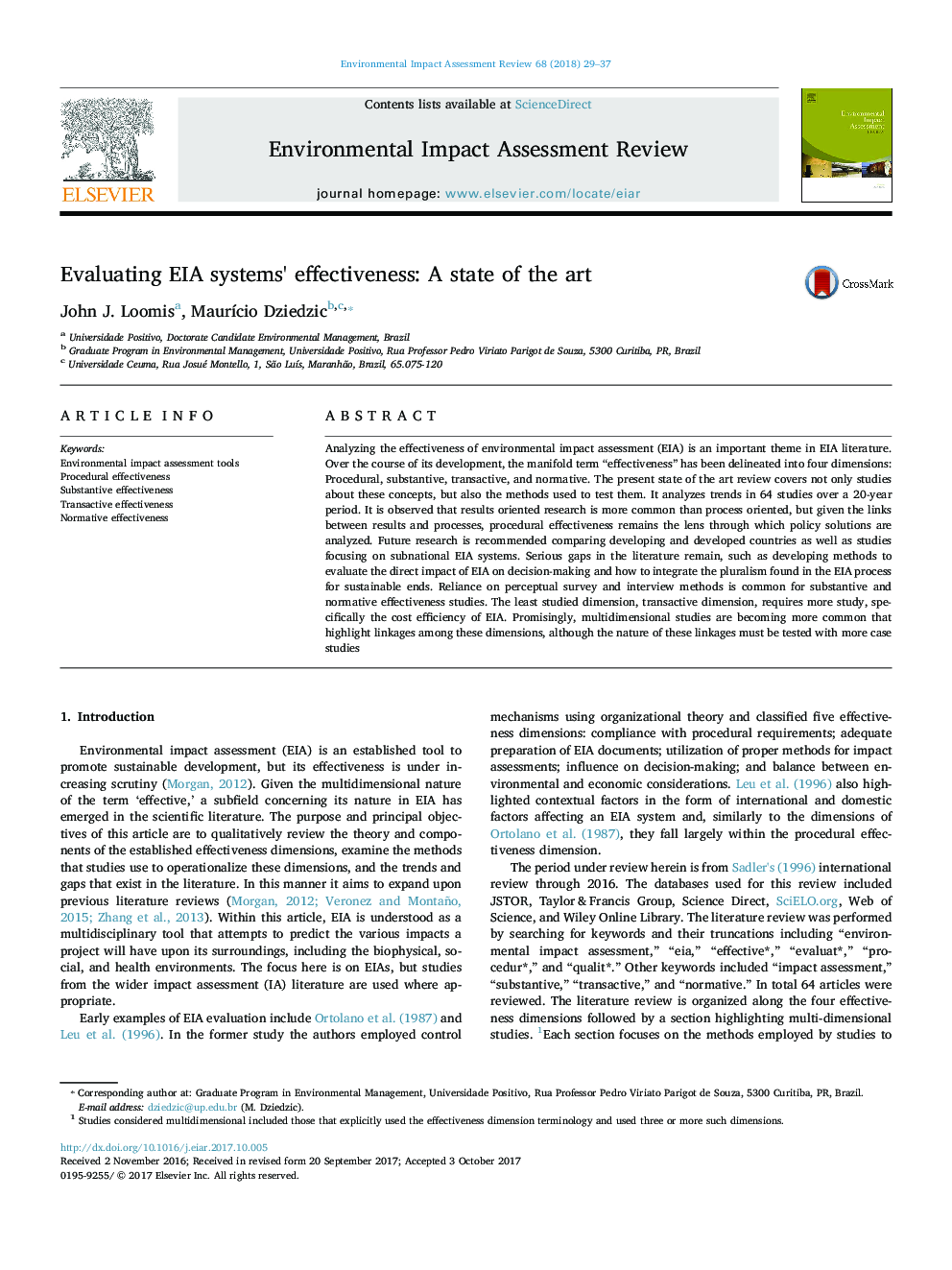| Article ID | Journal | Published Year | Pages | File Type |
|---|---|---|---|---|
| 5115605 | Environmental Impact Assessment Review | 2018 | 9 Pages |
Abstract
Analyzing the effectiveness of environmental impact assessment (EIA) is an important theme in EIA literature. Over the course of its development, the manifold term “effectiveness” has been delineated into four dimensions: Procedural, substantive, transactive, and normative. The present state of the art review covers not only studies about these concepts, but also the methods used to test them. It analyzes trends in 64 studies over a 20-year period. It is observed that results oriented research is more common than process oriented, but given the links between results and processes, procedural effectiveness remains the lens through which policy solutions are analyzed. Future research is recommended comparing developing and developed countries as well as studies focusing on subnational EIA systems. Serious gaps in the literature remain, such as developing methods to evaluate the direct impact of EIA on decision-making and how to integrate the pluralism found in the EIA process for sustainable ends. Reliance on perceptual survey and interview methods is common for substantive and normative effectiveness studies. The least studied dimension, transactive dimension, requires more study, specifically the cost efficiency of EIA. Promisingly, multidimensional studies are becoming more common that highlight linkages among these dimensions, although the nature of these linkages must be tested with more case studies
Related Topics
Physical Sciences and Engineering
Energy
Renewable Energy, Sustainability and the Environment
Authors
John J. Loomis, MaurÃcio Dziedzic,
